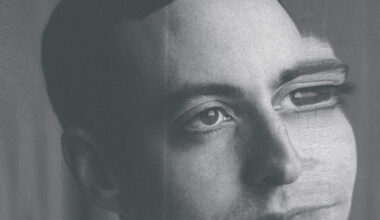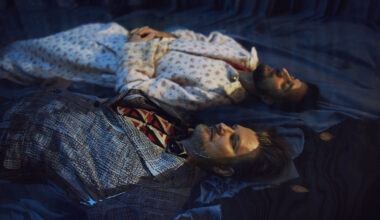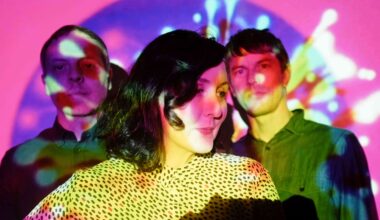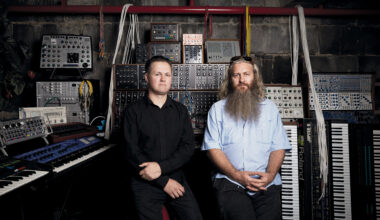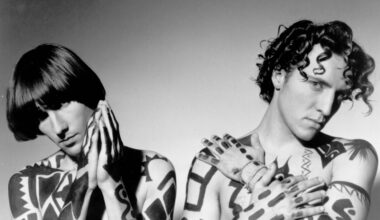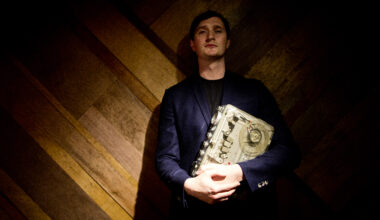The myth of Delia Derbyshire grows by the year, but her archive reveals that all is not quite as it seems, offering a fascinating insight into her sound-obsessed childhood and her work after leaving the radiophonic workshop
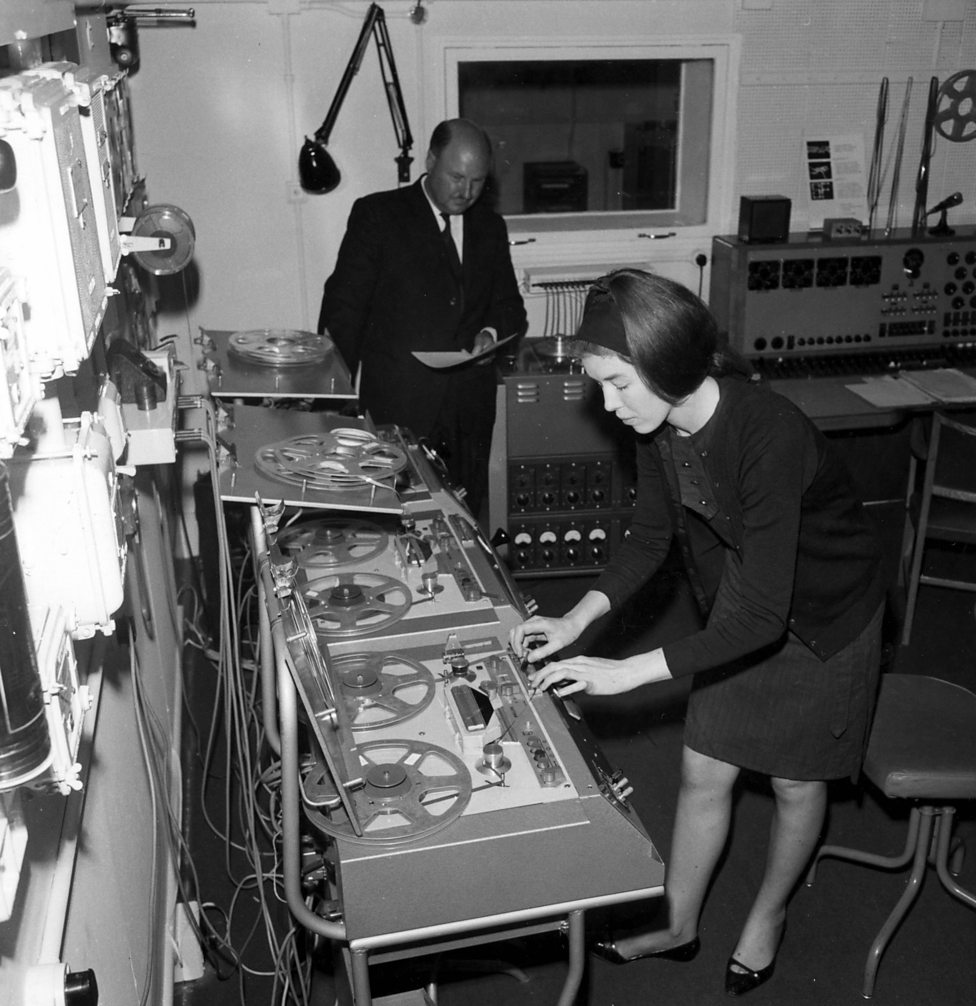
Of all the remarkable individuals associated with The Radiophonic Workshop, nobody has quite captured the imagination to the same degree as Delia Derbyshire. She was not there at the outset of the Workshop in 1958, joining the facility in 1962, and by 1973 she was gone – and yet she continues to fascinate in ways that her other brilliant colleagues have not.
Her extraordinary life and work has been dramatised on radio, film and in at least two theatre pieces (Noctium Theatre’s ‘Hymns For Robots’ being the most recent, performed throughout 2018), to say nothing of the numerous artists in various disciplines who have cited Derbyshire as a major influence on their own practice.
Much of that fascination is generated by the myths that have developed about her, some of which were perpetuated, as her long-term partner Clive Blackburn has acknowledged, by Derbyshire herself. The standard narrative of her life tends to move through a predictable sequence of beats, spliced together: her childhood in Coventry and the background sound of the Blitz, her realisation of Ron Grainer’s ‘Doctor Who’ theme tune in 1963, her lack of official credits at the BBC, her freelance activity and encounters with famous figures such as Paul McCartney, Yoko Ono and Anthony Newley, her growing disillusionment at the BBC in the early 1970s followed by her departure in 1973 and then… seemingly nothing.
Nearly 25 years pass before Derbyshire is approached by Peter Kember (Sonic Boom) and begins to create music once more just prior to her death in 2001. It’s a narrative that has been replicated again and again – in journalism, in academia, in dramatisations of Derbyshire’s life, as well as the fan cultures devoted to her.
In the laziest and most reductive versions of that basic narrative, there’s a reliance on the well-worn tale of the tragic self-destructive artist, with the added appeal of celebrity gossip and speculation as Derbyshire’s post-BBC life is often summarised as a decline into alcoholism until a last creative gasp thanks to the revivifying presence of Peter Kember.
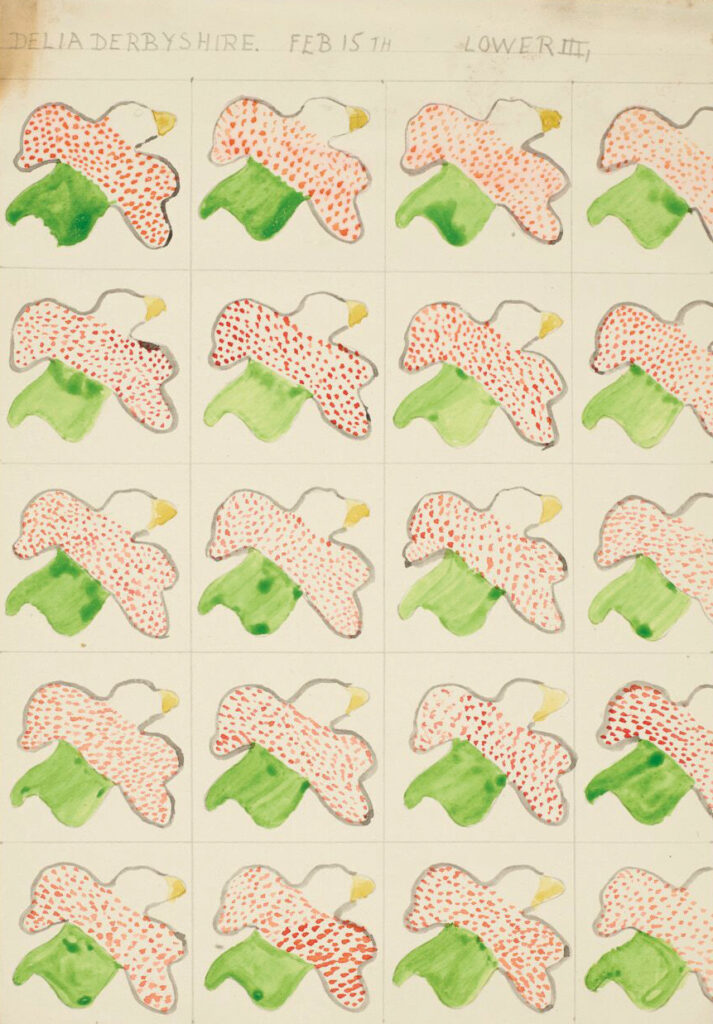
A 2008 piece in The Times is a textbook example of this tendency with the item dwelling more on claims about her “chaotic love life” and collaborations with McCartney and Jimi Hendrix. There’s a strange emphasis on the projects that Derbyshire might have done (the electronic backing to ‘Yesterday’) or did not take place (the tantalising, however erroneous, Hendrix suggestion), partnerships with famous “great men” rather than the significant work that she did create.
That work included her collaboration with the dramatist Barry Bermange on the four ‘Inventions For Radio’ (1964-65), which resulted in a new genre of radio feature whose audible influence can be traced to figures as diverse as Pink Floyd and Jonathan Harvey, and her partnership with the artists Elsa Stansfield and Madelon Hooykaas, all of which represented some of the projects that she was most proud of.
It’s difficult to dispel some of the most deep-rooted of these myths, but we’re now able to tell a more complex and nuanced story of Delia Derbyshire’s life. If the core facts (and fiction) feel so familiar that might be in part because, by comparison, we have known so little about the other phases of her life, especially her origins and post- BBC work.
How did somebody from a working class background in Coventry, growing up in Britain in the 1940s and 1950s, develop an interest in electronic music when it was not being taught in schools (or higher education for that matter) and opportunities to hear it were extremely limited? And what did she do after she left the BBC? Did she, as Louis Niebur states in his book ‘Special Sound: The Creation And Legacy Of The BBC Radiophonic Workshop’ (2010), retire completely from music by the mid-1970s? For many years, the widely held assumption was that she did. Yet, far from disappearing from view in 1973 and withdrawing completely from creative activity, Derbyshire was still active as a practitioner into the 1980s, albeit in a far more ad hoc manner.
Much of that counter-narrative has emerged as a result of research generated by the Delia Derbyshire Archive, housed at the University of Manchester’s John Rylands Library. The archive has grown considerably since it was first acquired in 2007 and now includes donations from Derbyshire’s friends and colleagues as well as a substantial collection of material from her childhood, including some of her first writing about sound and music, in which we can see her creative personality emerge and develop.
Her schoolwork demonstrates a growing affinity for sound and an interest in the sonic potential of everyday objects. In one story, she imagines a dusty music shop where the instruments and other items, a music stand and metronome, come to life at night, dance and play hide and seek with particular emphasis on the sounds each item makes as the dust sets them off sneezing and the double bass bursts out laughing (“You did not know a double bass could laugh? Then listen carefully when you next hear an orchestra; you might hear the ‘POM, POM, HA, HA, POM, POM, HO, HO,’ of Little Willie, the double bass”). Elsewhere, she writes frequently about her burgeoning love of music (“my favourite hobby”) with particular mentions for Bach, Heller, Mozart, Haydn and Purcell, together with dances by Shostakovich and, above all, Beethoven’s sonatas (with the 12-year-old Derbyshire describing them as “the pieces I like best… because they are so interesting”).
There are also numerous examples of her love of visual art, which would become a driving concern in her work both within and beyond the BBC, taking in projects about Goya, Henry Moore, Paolozzi and Picasso, as well as a series of fruitful collaborations with Hornsey College’s Light/Sound Workshop, which resulted in several pioneering events that experimented with the relationship between electronic music and visual projections. Derbyshire’s schoolbooks are full of visual miniatures and doodles – often intricate, abstract shapes and geometric formations – and it’s here that we can perhaps see the origins of her later interest in loop-based music and the process of repeating a musical structure or sonic element.
The core of the Derbyshire Archive, however, is made up of items that she had kept with her after she left the BBC: documents and correspondence relating to many of her freelance and some of her BBC projects, including scores (often using conventional notation, but also Derbyshire’s own graphics) and work-in-progress notes. Most significantly, there are 267 tapes, primarily 10.5-inch reels, which feature final mixes, draft edits and make-up tapes where one can hear certain projects in varying stages of development, as well as recordings of non-Derbyshire material.
These tapes are revealing of Derbyshire’s own diverse tastes and interests in music: Mozart, Penderecki, Stockhausen, Can, Ray Davies, Art Blakey & The Jazz Messengers and Yusef Lateef’s 1961 ‘Eastern Sounds’ album. What also becomes clear from the freelance tapes is her resourcefulness in recycling, repurposing or reinventing existing material from her own back catalogue, sometimes transforming a favourite sound source (her beloved green metal lampshade) into a new configuration or lifting a cue directly from one production into another.
The recording of a boy chorister (John Hahessy, later Elwes), which provides the basis for the entire score of ‘Amor Dei’, is recycled by Derbyshire for several later projects, including her sound design for Peter Hall’s 1967 Royal Shakespeare Company production of ‘Macbeth’. There is clear evidence in the archive tapes of Derbyshire and Brian Hodgson, her close friend and colleague at The Radiophonic Workshop, sharing material from earlier productions on new freelance projects outside of their BBC commitments, whether for Unit Delta Plus or Kaleidophon, the two independent facilities they set up in the late 1960s with Peter Zinovieff and David Vorhaus respectively.
The vast majority of Derbyshire’s BBC projects, including the original ‘Doctor Who’ tapes, are contained within the BBC Radiophonic Workshop Archive, housed in the BBC Archive Centre at Perivale, but Derbyshire’s personal archive at The University of Manchester Library holds a number of key BBC works, including ‘The Dreams’ and ‘Amor Dei’, the first two ‘Inventions for Radio’ from 1964, a 1971 Schools Radio dramatisation of the story of Noah that finds Derbyshire creating a series of synthesiser-based dances with an infectious groove, and ‘Tutankhamun’s Egypt’ (1972) one of her last major assignments at the BBC before her departure in 1973.
‘Tutankhamun’s Egypt’ was a problematic production and, according to Hodgson, marked the real beginning of Derbyshire’s “disintegration” and disillusionment with, as she later put it, the “accountants” who she felt were taking over the running of the BBC. Derbyshire had mapped out her concept for this 13-part factual series in advance, which included sampling a recording of the silver trumpet found in Tutankhamun’s tomb, but the original production schedule was changed late in the day and the transmission order of the episodes swapped so that Derbyshire was left working on re-scheduled episodes right down to the wire as they were being dubbed (her frustration is audible in some of her introductions to the respective cues).
For Hodgson, it was on this production “when she really started withdrawing from everything [as] the pressures of the deadlines were becoming more and more, and she hated pressure”. Hodgson would try to help Derbyshire, inviting her to join him at his new independent facility, Electrophon, and collaborate on the score for the horror film ‘The Legend Of Hell House’ (1973). Although Derbyshire was credited on the film, her actual contribution to the production was, according to Hodgson, “confined to having dinner and standing around taking snuff”.
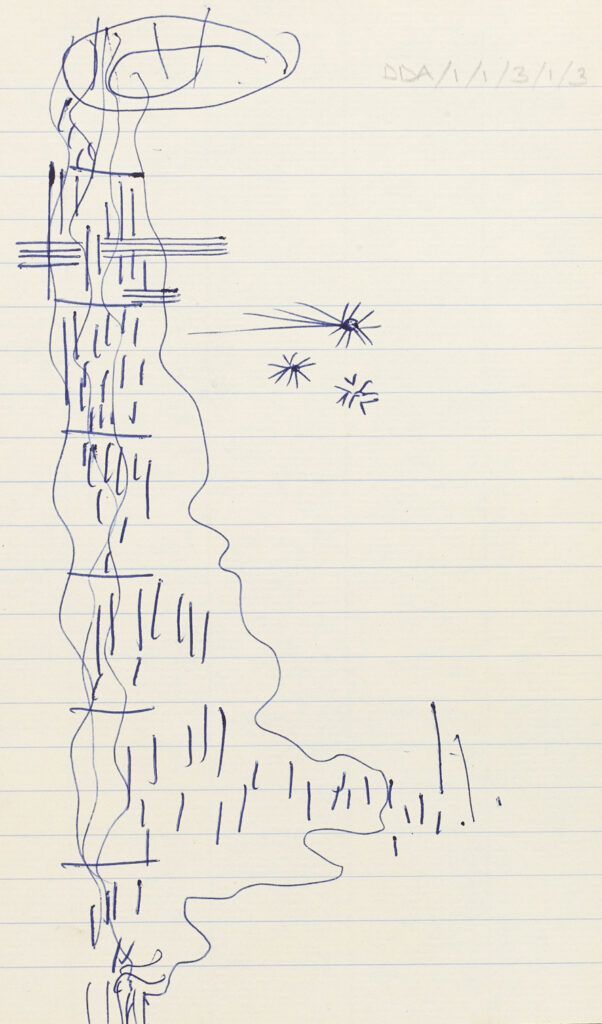
Derbyshire was not quite withdrawing from everything, though. At the same time as her career at the BBC was coming to an end, she was developing one of her most rewarding collaborations, with the visual artists and filmmakers Elsa Stansfield and Madelon Hooykaas, known collectively as Stansfield/Hooykaas.
Derbyshire first partnered with Stansfield on the sound for Anthony Roland’s award-winning art film ‘Circle Of Light’ (1972) and that was followed by two films with Stansfield/Hooykaas: ‘One Of These Days’ (1973) and ‘About Bridges’ (1975). Each film would see Derbyshire involved from an early stage in the production (a marked contrast with the 11th hour nature of ‘Tutankhamun’s Egypt’) and it is perhaps not surprising that she would generate a substantial amount of new material rather than repurposing earlier sounds and cues, with the score for the first film based primarily around manipulations of the human voice.
Although only collaborating directly on two films with Stansfield/Hooykaas, Derbyshire’s friendship with the pair was enduring and she would influence their later experiments in video art: ‘Labyrinth Of Lines’ (1978) sampled Derbyshire’s score for ‘One Of These Days’ and Stansfield’s electronic sound for works such as ‘Running Time’ (1979) displays a strong Delian influence, with ambiences and looped rhythmic sequences created from everyday sound sources.
It was Stansfield and Hooykaas who introduced Derbyshire to the Polish-born artist Elisabeth Kozmian in the late 1970s. By now, Derbyshire had returned to London after living and working for several years in north east Cumbria, near Hadrian’s Wall, first in the village of Gilsland and then at the remarkable LYC Museum and Gallery, where she was an assistant to the Chinese-born artist Li Yuan-chia.
Derbyshire was not without music during these years and had with her two pianos, a VCS 3 synthesiser and a much-loved spinet. Back in London, she composed a solo piano score for Kozmian’s “experimental documentary” ‘Two Houses’ (1980) and followed that with a demo cue, augmenting electronically Kozmian singing a Polish folk song, for an unmade film. These projects see her still active as a composer and musician seven years after it has often been reported and assumed that she had retreated from creating new music.
According to Clive Blackburn, Derbyshire’s partner from 1980 until her death in 2001, she would take on the occasional project and, in the 1980s, made several visits to Adrian Wagner’s studio to work on new music, including the theme for a programme about Stonehenge.
It’s all too easy to sweep over this lengthy phase of Derbyshire’s life and see it as an inexorable fall into decline, but to do so would be to deny her any agency in making principled decisions about what projects and roles she wanted to take on. None of this is to pretend that her post-BBC life was free from difficulties, but neither was it without music and creative activity, whether that was running an art gallery, composing for piano, or playing the spinet for her own delight.
We still have much to learn about her work and some mysteries may never be resolved, but that is something to celebrate and will ensure that Delia Derbyshire continues to surprise and enthral.
David Butler is Senior Lecturer in Drama and Screen Studies at the University of Manchester

